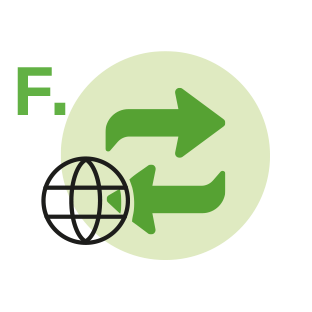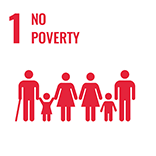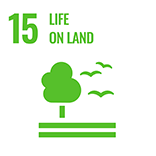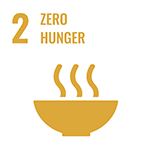Getting slopes in shape – The EWMR pilot project in Rwanda

Summary
The Embedding Integrated Water Resource Management in Rwanda (EWMR) project was introduced in 2019 as a pilot project to address the interlinkages of erosion and flood-related problems in different districts within the Sebeya River catchment. The overall objective of the solution is to improve livelihoods and the environment in the region through landscape restoration and improved natural resource management.
The Rutsiro, Ngororero, Nyabihu, and Rubavu districts, all of which are located along the Sebeya River, have witnessed the devastation caused by flooding from the river, including reduced agricultural yields and disruption of water services. The entire watershed catchment area of the Sebeya River is also vulnerable to heavy precipitation due to its steep mountainous landscapes, fragile soils, and intensive use of limited land resources coupled with unsustainable agricultural practices.
The EWMR project has introduced terraces to slow the upstream inflow of water into the Sebeya River, reducing the river’s maximum level and confining damage during floods. By retaining more of the precipitation, the soil is also richer both in terms of soil nutrients and water, increasing water availability for the crops grown on these slopes. A participatory approach is used by the implementers to include local communities in the entire project cycle, from the planning phase to implementation.
Under this initiative, water harvesting tanks were provided to communities that have limited access to water for domestic use.Local gender roles often give women the responsibility of fetching water, a task that requires traveling long distances. With the provision of water reservoirs, this task will become less strenuous. They have also been able to establish home gardens, which they irrigate using the water collected.
Overview
- Location:
- Implementation sites:
-
- Single country
- Multiple locations
- Mountain region:
-
Highlands in Rutsiro, Ngororero, Nyabihu and Rubavu
- Site locations:
-
Rutsiro, Ngororero, Nyabihu and Rubavu districts.
- Solution scale:
- Ecosystem type(s):
- Solution type(s):
- Sector(s):
- Climate impact(s) addressed:
- Climate impact time-scale(s):
- Main benefit associated with the solution:
- Co-benefit(s) associated with the solution implementation:
- Implementation timeline:
-
- 2019 - 2022
Solution details
Main beneficiaries & outcomes
The project has many benefits for household livelihoods in the community through improved income and food security. There are also conservation benefits in the catchment area, leading to flood and erosion control. At the end of 2020, IUCN reported that the EWMR project had reached 100 communities through its participatory community approach. With the activities to address flooding, the EWMR project has already created more than 8,000 jobs for smallholder farmers in the Rubavu district, who get involved in casual labor such as tree planting for reforestation.
During the challenging times of COVID-19 in Rwanda, which affected the economy and livelihoods of many citizens, 15,000 local people had an income through their employment in the project, working on restoration activities. The project will run until 2022 and has restored almost 3,000 hectares of land to date.
Planning and implementation
The initiative has been implemented by The Government of Rwanda through the Rwanda Water Resources Board (RWB) in partnership with Rwanda Rural Rehabilitation Initiative (RWARRI) and in close collaboration with the International Union for Conservation of Nature (IUCN) and the SNV Netherlands Development Organization. Through Village Land Use Action Plans (VLUAP), the communities and landowners are those in charge of implementing the project activities, whereby the community comes together to identify problems related to soil erosion and propose actions that can be implemented to control soil erosion.
Finance
The project has been financed by the Netherlands Ministry of Foreign Affairs through a grant of $2,836,930.
Innovation
The EWMR project is developing innovative financing mechanisms and value chains to improve the livelihoods of the targeted communities through ecological and economic benefits. As part of this solution, the implementing partners worked with existing farming cooperatives to implement adaptation solutions, such as crop rotation, planting tree species favored by farmers on their cropland, using organic manure, and other CSA practices. Moreover, the Water Management Information System (MIS) of the RWB is being reinforced through its Technical Assistance Consortium with the installation and configuration of new telemetry hydrometric stations, training, and capacity-building efforts.
Performance evaluation
Although no report has been found available on the evaluation of the project results. It is known that a joint monitoring team consisting of members of the Technical Assistance Consortium, the Rwanda Water Resources Board, and the districts has carried out assessments of the progress of the solution in the targeted areas, same that has helped to identify and describe some of the project outcomes. (Please click on this link for further information)
Long term project sustainability and maintenance
The long-term sustainability of this solution is supported by the training, awareness and active involvement of local community members in the participating districts, which helps to ensure ownership of the results and of the landscape restoration and IWRM processes. In addition, the project has also contributed to strengthening operational landscape governance and management institutions.
Capacities for design and implementation
Outlook & Scalability
Transformation and future outlook
The solution promotes transformative adaptation in the Sebeya and other catchments by helping communities move away from unsustainable practices and improving their overall knowledge and skills that will enable them to cope with the climate impacts affecting the area as well as better preserve their landscapes and natural resources in the long term. The key role of the population in the design and implementation of the measures not only improved their incomes over the duration of the project but is also increasing their resilience.
Potential for upscaling and replication
The EWMR Technical Assistance (TA) consortium, in collaboration with RWB, is extending the watershed management planning introduced by the EWMR project to the lower Mukungwa and Akagera catchments, which aims to strengthen the resilience of these regions to various degradation factors, such as climate change and human impacts, including agriculture, deforestation and mining. This scaling-up plan will start with the completion of a biophysical assessment and hydrological analysis in the areas with the support of Future Water.







Comments
There is no content